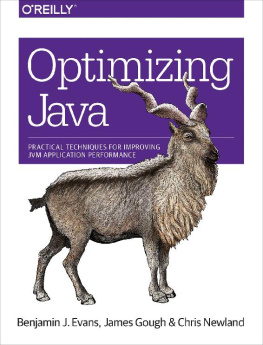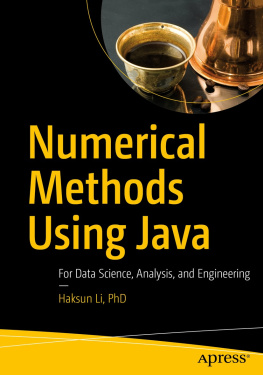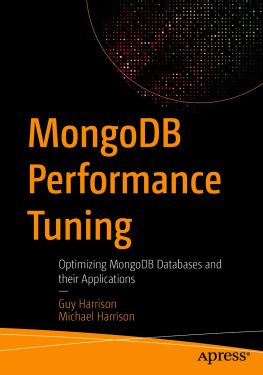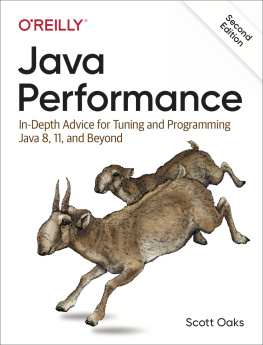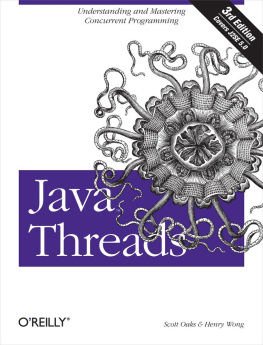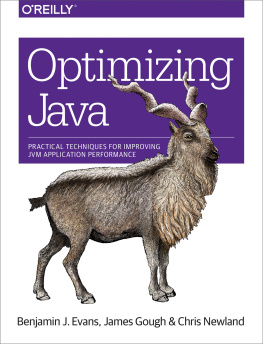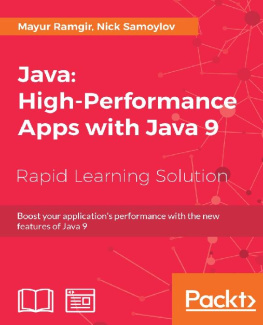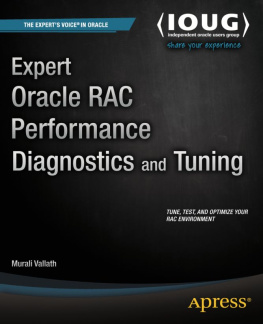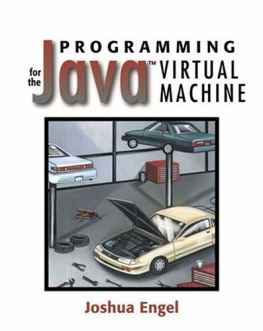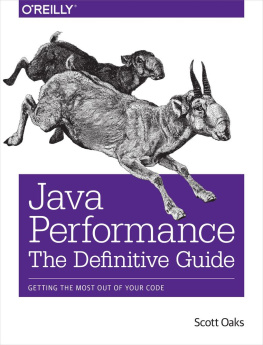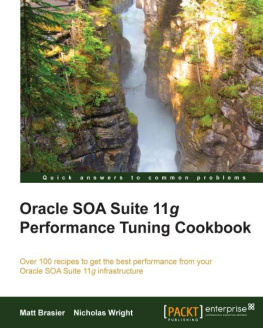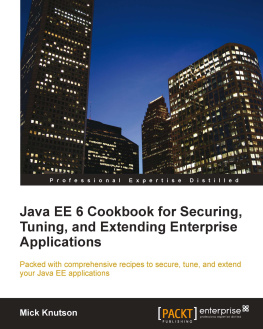Chris Newland - Optimizing Java
Here you can read online Chris Newland - Optimizing Java full text of the book (entire story) in english for free. Download pdf and epub, get meaning, cover and reviews about this ebook. year: 2018, publisher: O’Reilly Media, Inc., genre: Computer. Description of the work, (preface) as well as reviews are available. Best literature library LitArk.com created for fans of good reading and offers a wide selection of genres:
Romance novel
Science fiction
Adventure
Detective
Science
History
Home and family
Prose
Art
Politics
Computer
Non-fiction
Religion
Business
Children
Humor
Choose a favorite category and find really read worthwhile books. Enjoy immersion in the world of imagination, feel the emotions of the characters or learn something new for yourself, make an fascinating discovery.
- Book:Optimizing Java
- Author:
- Publisher:O’Reilly Media, Inc.
- Genre:
- Year:2018
- Rating:3 / 5
- Favourites:Add to favourites
- Your mark:
Optimizing Java: summary, description and annotation
We offer to read an annotation, description, summary or preface (depends on what the author of the book "Optimizing Java" wrote himself). If you haven't found the necessary information about the book — write in the comments, we will try to find it.
Performance tuning is an experimental science, but that doesnt mean engineers should resort to guesswork and folklore to get the job done. Yet thats often the case. With this practical book, intermediate to advanced Java technologists working with complex technology stacks will learn how to tune Java applications for performance using a quantitative, verifiable approach.
Most resources on performance tend to discuss the theory and internals of Java virtual machines, but this book focuses on the practicalities of performance tuning by examining a wide range of aspects. There are no simple recipes, tips and tricks, or algorithms to learn. Performance tuning is a process of defining and determining desired outcomes. And it requires diligence.
- Learn how Java principles and technology make the best use of modern hardware and operating systems
- Explore several performance tests and common anti-patterns that can vex your team
- Understand the pitfalls of measuring Java performance numbers and the drawbacks of microbenchmarking
- Dive into JVM garbage collection logging, monitoring, tuning, and tools
- Explore JIT compilation and Java language performance techniques
- Learn performance aspects of the Java Collections API and get an overview of Java concurrency
Chris Newland: author's other books
Who wrote Optimizing Java? Find out the surname, the name of the author of the book and a list of all author's works by series.

